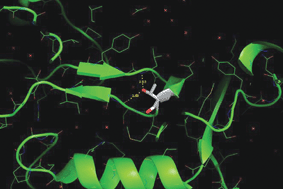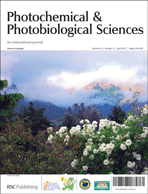This month sees the following articles in PPS that are in the top ten most accessed:-
Engineered photoreceptors as novel optogenetic tools
Andreas Möglich and Keith Moffat
Photochem. Photobiol. Sci., 2010, 9, 1286-1300 DOI: 10.1039/C0PP00167H, Perspective
The human health effects of ozone depletion and interactions with climate change
M. Norval, R. M. Lucas, A. P. Cullen, F. R. de Gruijl, J. Longstreth, Y. Takizawa and J. C. van der Leun
Photochem. Photobiol. Sci., 2011, 10, 199-225 DOI: 10.1039/C0PP90044C, Perspective
Ozone depletion and climate change: impacts on UV radiation
R. L. McKenzie, P. J. Aucamp, A. F. Bais, L. O. Björn, M. Ilyas and S. Madronich
Photochem. Photobiol. Sci., 2011, 10, 182-198 DOI: 10.1039/C0PP90034F, Perspective
Modulation of the spectroscopic property of Bodipy derivates through tuning the molecular configuration
Yuting Chen, Liang Wan, Daopeng Zhang, Yongzhong Bian and Jianzhuang Jiang
Photochem. Photobiol. Sci., 2011, Advance Article DOI: 10.1039/C1PP00001B, Paper
Nanoparticles: their potential use in antibacterial photodynamic therapy
Stefano Perni, P. Prokopovich, Jonathan Pratten, Ivan P. Parkin and Michael Wilson
Photochem. Photobiol. Sci., 2011, Advance Article DOI: 10.1039/C0PP00360C, Perspective
Effects of solar UV and climate change on materials
A. L. Andrady, H. Hamid and A. Torikai
Photochem. Photobiol. Sci., 2011, 10, 292-300 DOI: 10.1039/C0PP90038A, Perspective
Effects of UV radiation on aquatic ecosystems and interactions with climate change
D.-P. Häder, E. W. Helbling, C. E. Williamson and R. C. Worrest
Photochem. Photobiol. Sci., 2011, 10, 242-260 DOI: 10.1039/C0PP90036B, Perspective
Effect of titanium dioxide crystalline structure on the photocatalytic production of hydrogen
Gian Luca Chiarello, Agatino Di Paola, Leonardo Palmisano and Elena Selli
Photochem. Photobiol. Sci., 2011, 10, 355-360 DOI: 10.1039/C0PP00154F, Paper
Photoinduced formation of reversible dye radicals and their impact on super-resolution imaging
Sebastian van de Linde, Ivan Krstić, Thomas Prisner, Sören Doose, Mike Heilemann and Markus Sauer
Photochem. Photobiol. Sci., 2011, 10, 499-506 DOI: 10.1039/C0PP00317D, Paper
Cytosolic delivery of LDL nanoparticle cargo using photochemical internalization
Honglin Jin, Jonathan F. Lovell, Juan Chen, Kenneth Ng, Weiguo Cao, Lili Ding, Zhihong Zhang and Gang Zheng
Photochem. Photobiol. Sci., 2011, Advance Article DOI: 10.1039/C0PP00350F, Paper
Why not take a look at the articles today and blog your thoughts and comments below.
Fancy submitting an article to PPS? Then why not submit to us today or alternatively email us your suggestions.












